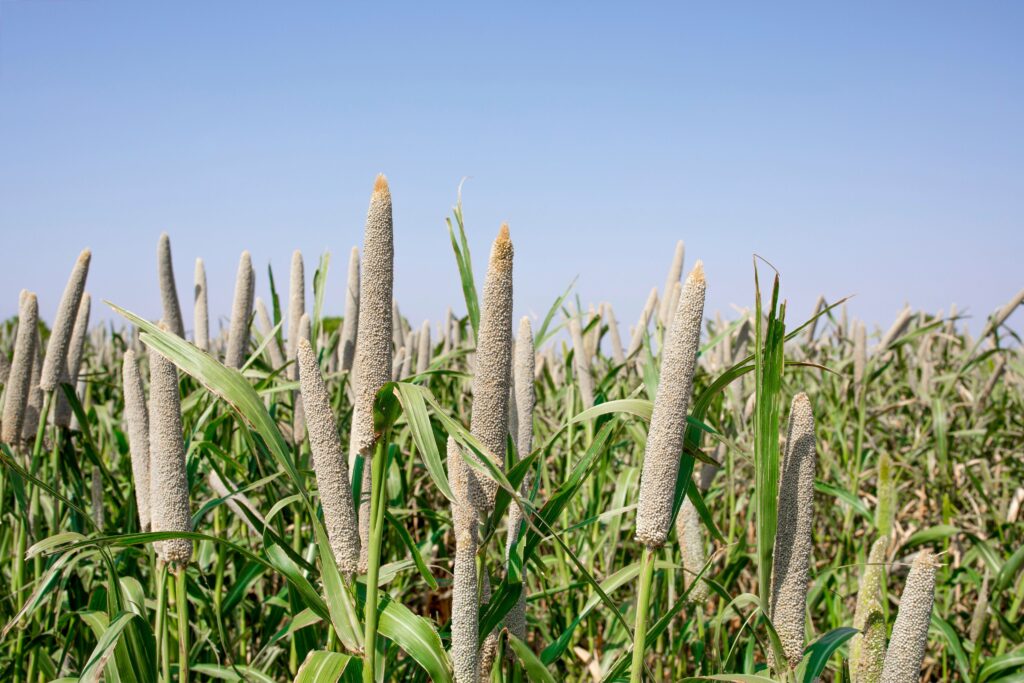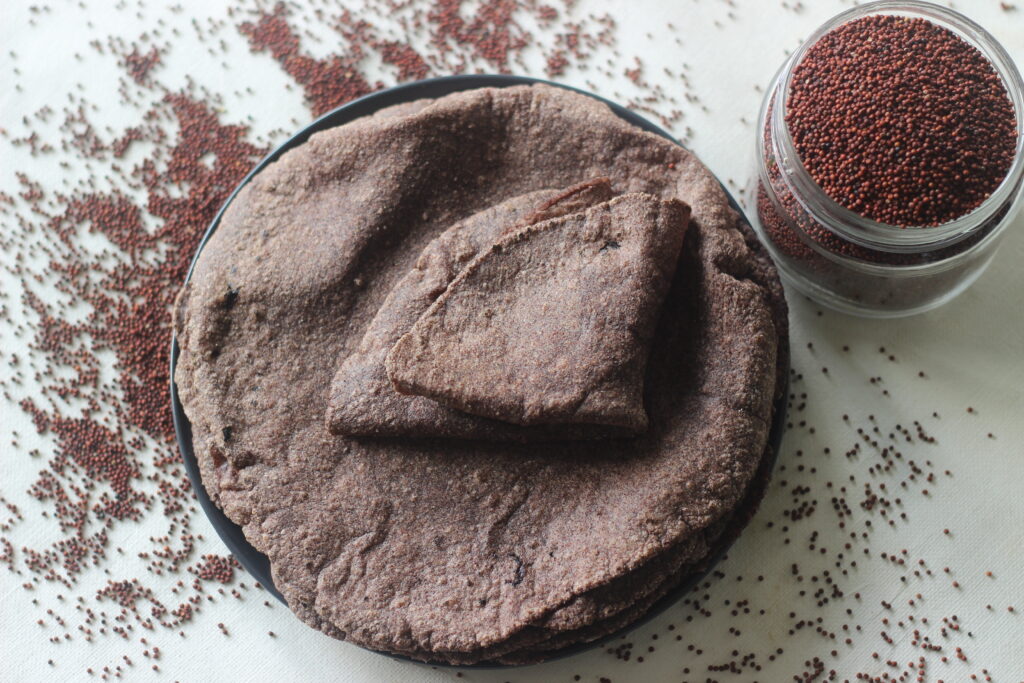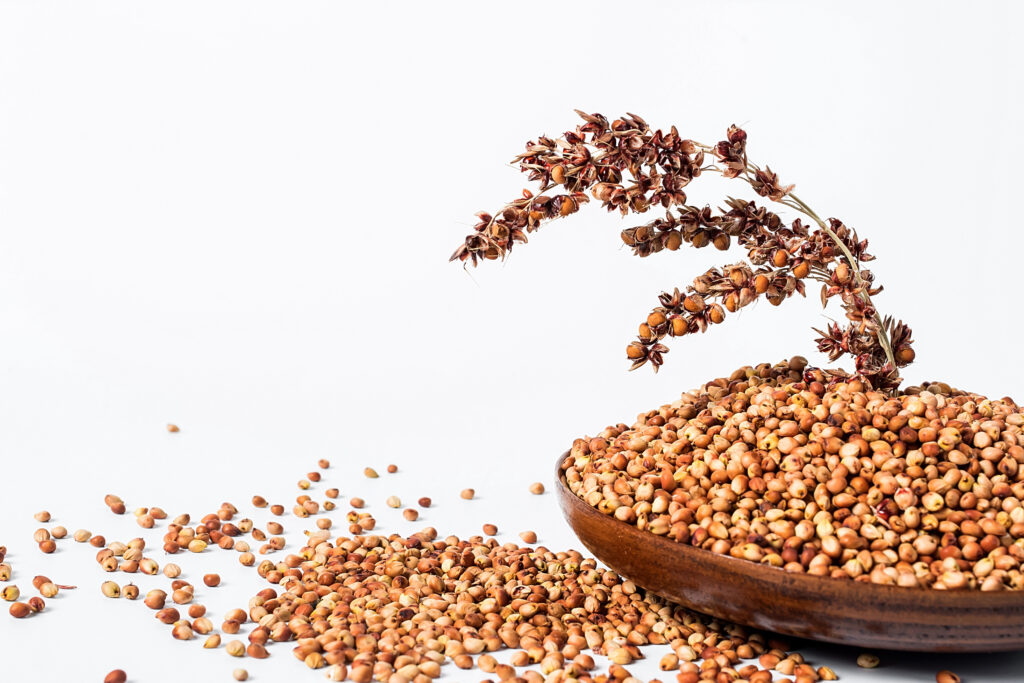Millets, once considered an ancient grain, have made a strong comeback in recent years as a highly nutritious, gluten-free alternative to more common grains like wheat and rice.
These small-seeded crops are not only hardy and sustainable but also packed with nutrients, making them an excellent choice for promoting overall health.
In this blog, we will explore the different types of millets and their benefits, helping you understand why adding these grains to your diet is a wise decision.
What Are Millets?
Millets are a group of small-seeded grasses cultivated worldwide as cereal crops. They have been a staple in regions like Asia and Africa for thousands of years and are well-suited for growth in arid and semi-arid areas.
Despite their small size, millets are loaded with fiber, vitamins, minerals, and antioxidants, making them a powerhouse of nutrition.
Types of Millets
Below are some of the most commonly consumed millets:
- Pearl Millet (Bajra)
- Finger Millet (Ragi)
- Foxtail Millet (Kangni)
- Sorghum (Jowar)
- Barnyard Millet (Sanwa)
- Proso Millet (Chena)
- Little Millet (Kutki)
- Kodo Millet (Kodon)
- Browntop Millet (Korle)
Types of Millets and Their Benefits
There are several varieties of millets, each offering unique nutritional benefits. Here are the types of millets and their benefits:
1. Pearl Millet (Bajra)
Pearl millet is one of the most widely grown types of millet, especially in India and Africa. It has a nutty flavor and is rich in nutrients like protein, fiber, and iron.
Pearl millet can be eaten as porridge, flatbreads (bajra roti), steamed millet, or added to soups and salads.
Benefits of Pearl Millet:
- Manages Blood Sugar Levels: A polyphenol-rich extract from pearl millet inhibits enzymes that cause high blood glucose levels after meals and also supports the liver in taking up glucose.
- Rich in Iron: Pearl millet is an excellent source of iron, making it a valuable food for preventing and managing anemia.
- Lowers Cholesterol: The soluble fiber in pearl millet helps lower cholesterol levels, supporting heart health.
2. Finger Millet (Ragi)
Finger millet is a popular choice in Southern India and is known for its high calcium content.
It can be consumed as porridge, roti (flatbread), or in baked goods.
Ragi malt is a common nutritious drink made from finger millet flour, mixed with water or milk, and lightly sweetened or salted. It is commonly enjoyed as a morning or mid-day drink, especially during hot summers for its cooling and energy-boosting properties.
Benefits of Finger Millet:
- High in Calcium: Finger millet is one of the best plant-based sources of calcium, which is essential for strong bones and teeth.
- Manages Blood Sugar: Phenolics from finger millet has shown inhibitory effects on starch digesting enzymes, which reduced blood glucose levels after meals.
- Reduces Blood Pressure: Ethanol extracts from finger millet were found to reduce blood pressure in rats by controlling the renin-angiotensin system, which plays a crucial role in controlling blood pressure.
3. Foxtail Millet (Kangni)
Foxtail millet is another ancient grain known for its high protein and low carbohydrate content.
It has a slightly sweet, nutty flavor and is often used in salads, soups, and stir-fries.
Benefits of Foxtail Millet:
- Reduces Blood Sugar Levels: Foxtail can effectively control blood sugar levels. Foxtail millet’s starch and protein was found to improve blood sugar control, glucose metabolism and reduce abnormal fat levels in diabetic rats.
- Boosts Heart Health: Consuming protein hydrolysates from foxtail millet was found to help lower high blood pressure and reduce related heart problems in rats with spontaneous hypertension.
- Improves Immune Function: It contains essential nutrients like vitamins A and B, which strengthen the immune system and improve skin and eye health.
- Reduces Blood Pressure: Mild hypertensive patients had significant decrease in both systolic and diastolic blood pressure after following a diet that included whole foxtail millets.
- Improves Digestive Health: Foxtail millet has been used in traditional Chinese medicine to treat issues like weak digestion, stomach reflux, vomiting, reduced appetite, and bloating.
- Supports Liver Health: Heat-treated foxtail millet can effectively reduce the effects of non-alcoholic fatty liver disease (NAFLD) by lowering total cholesterol and triglyceride levels in the liver and by improving gut microbiota balance disrupted by NAFLD.
- May Prevent Cancer: Consumption of foxtail millet may reduce the risk of certain types of cancer. For example, two varieties of foxtail millet was found to inhibit the growth of breast and liver cancer cells in cellular studies.
4. Sorghum (Jowar)
Sorghum is one of the top five cereal crops in the world and is often used as a gluten-free flour substitute. It is rich in protein, fiber, and antioxidants.
Sorghum can be eaten as porridge, roti, popped like popcorn, or used in soups, salads, and gluten-free baking.
Benefits of Sorghum:
- Regulates Blood Sugar: Studies suggest that phenolics from sorghum has effectively inhibited the starch digesting enzymes, which which reduced blood sugar levels after meals.
- Heart Health: Sorghum may reduce the risk of heart disease with its ability to reduce cholesterol levels. An animal study demonstrated that sorghum fed hamsters had lower non-HDL cholesterol (includes LDL and VLDL cholesterol), which is a risk factor of heart diseases.
- Reduces Blood Pressure: Alpha-kafirins, a type of protein from sorghum was found to inhibit the activity of the enzyme that converts angiotensin I, helping to lower blood pressure.
- Helps in Weight Management: Tannins in sorghum interact with the amylose in the starch of sorghum forming resistant starch. This resistant starch makes you feel full and may help in weight management.
- May Prevent Cancer: Regular consumption of sorghum may prevent the risk of cancer. A compound from the bran of black sorghum showed strong inhibition against the growth of cancer cells when tested against various human cancer cell lines.
- Brain Health: Sorghum may also inhibit neurotoxicity, which may lead to various neurological disorders. Polyphenols from sorghum may help stop the neurotoxic aggregation (harmful buildup of proteins), to prevent and treat Alzheimer’s disease.
5. Barnyard Millet (Sanwa)
Barnyard millet is a popular type of millet consumed in India, especially during fasting periods. It has a fluffy texture when cooked and is packed with essential nutrients.
Barnyard millet can be consumed as porridge, cooked like rice, used in upma, idli, dosa, or added to salads and soups for a nutritious meal.
Benefits of Barnyard Millet:
- Reduces Blood Sugar Levels: Barnyard millet contains high levels of p-coumaric and chlorogenic acids, which help reduce harmful advanced glycation end-products (AGEs). These compounds protect proteins in the body from damage caused by sugar-related processes, helping to prevent protein damage and related health issues.
- Low in Calories: Barnyard millet is a low-calorie food, making it an excellent choice for people trying to lose weight.
- Good Source of Iron: Barnyard millet is rich in iron, helping prevent iron-deficiency anemia and supporting overall energy levels.
- May Prevent the Risk of Cancer: Vanillin, a compound from barnyard millet has been shown to inhibit the growth of cancer and induced death in colon cancer cell lines.
6. Proso Millet (Chena)
Proso millet is commonly grown in India and China. It has a mild, slightly sweet taste and is often used in birdseed but is also highly nutritious for human consumption.
Proso millet can be eaten as porridge, added to salads, cooked like rice, used in pilafs, soups, or ground into flour for baking.
Benefits of Proso Millet:
- Controls Diabetes: Consumption of proso millet has been found to control blood sugar levels. Proso millet diet was found to improve blood sugar control, liver and kidney health, and insulin resistance in diabetic mice.
- Rich in Protein: Proso millet is a good source of protein, making it a valuable food for vegetarians and vegans.
- Supports Bone Health: The magnesium and phosphorus in proso millet contribute to maintaining strong bones and teeth.
- May Prevent Cancer: Vanillin, a compound also extracted from proso millet inhibited the growth of cancer and induced cell death in colon cancer cell lines.
7. Little Millet (Kutki)
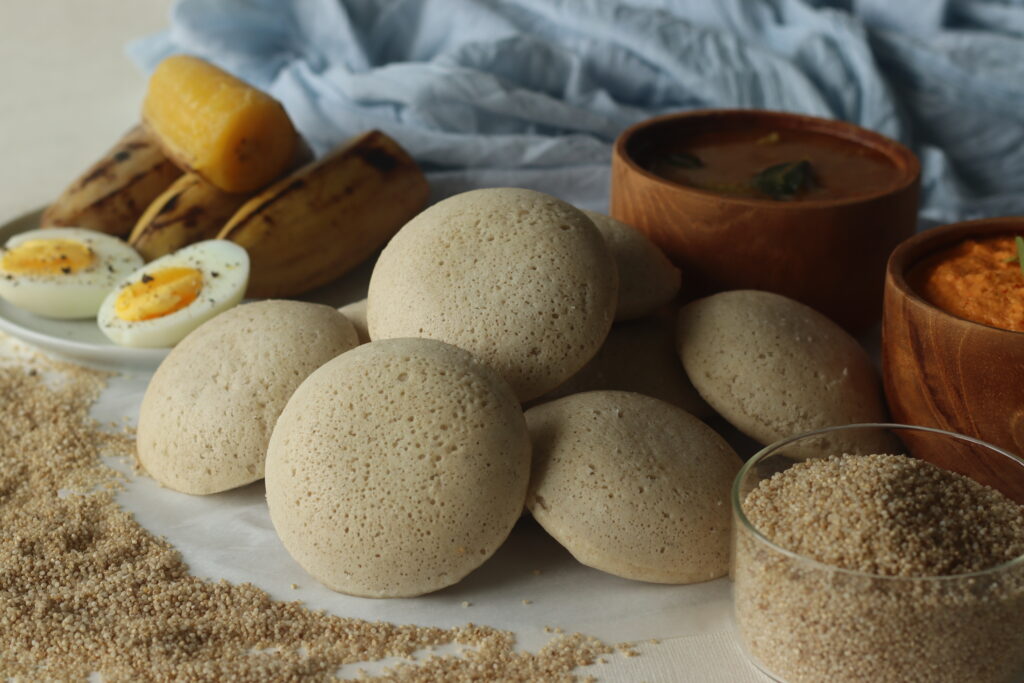
Little millet is a small, nutritious grain that is easy to cook and can be used in various dishes like porridge, dosa, or upma. It is highly nutritious and quick to digest.
Benefits of Little Millet:
- Promotes Weight Loss: The high fiber content and low-calorie nature of little millet make it an excellent food for those looking to lose weight.
- Controls Blood Sugar: With a low glycemic index, little millet helps regulate blood sugar levels, making it a good option for people with diabetes.
- Rich in B-Vitamins: Little millet is packed with B-vitamins that support metabolism and promote healthy skin and hair.
- Improves Digestive Health: The fiber in little millet aids in digestion, preventing constipation and other digestive issues.
8. Kodo Millet (Kodon)
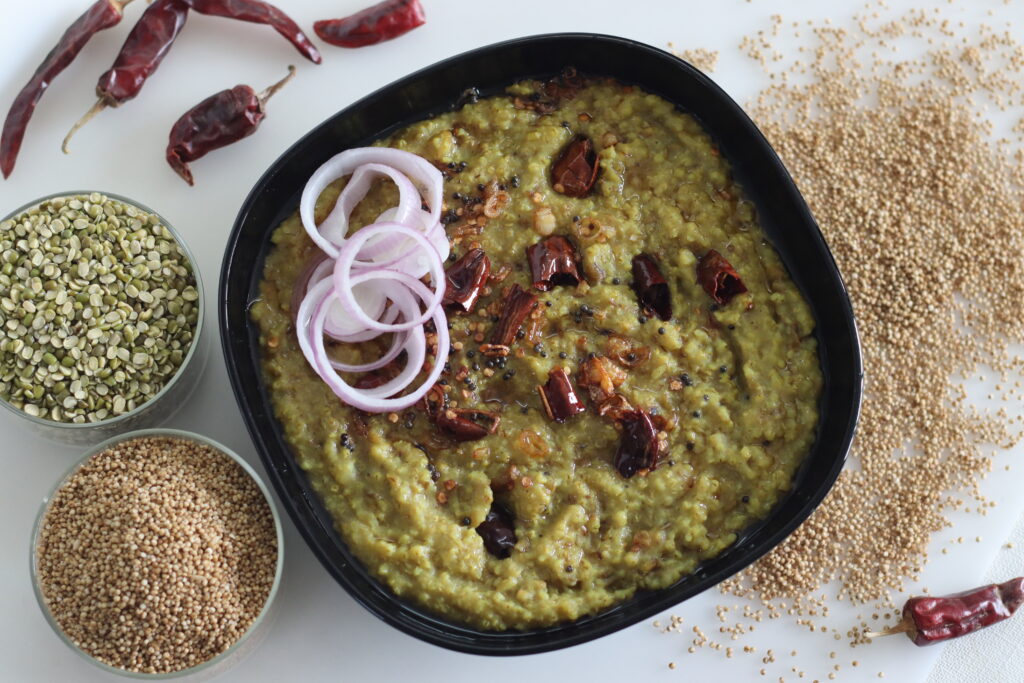
Kodo millet is primarily grown in India and Africa. It has a rich nutritional profile, with high amounts of dietary fiber and protein.
Kodo millet can be consumed as porridge, cooked like rice, used in upma, khichdi, pulao, or ground into flour for making rotis, dosas, and baked goods.
Benefits of Kodo Millet:
- Manages Blood Sugar: Regular consumption of finger millet may help in managing blood sugar levels. For instance, feeding rats with kodo and finger millet has been shown to reduce blood sugar levels in diabetic rats.
- Prevents Heart Diseases: Kodo millet is rich in antioxidants, which reduces oxidative stress. Phenolic extract of kodo millet was found to be effective in inhibiting the oxidation of LDL cholesterol and liposome, which may lead to heart disease and stroke.
- Supports Bone Health: The presence of calcium and magnesium strengthens bones and reduces the risk of bone-related disorders.
- Prevents the Risk of Cancer: Ferulic acid and p-coumaric acid from kodo millet was found to inhibit the growth of human colorectal cancer cells in cellular studies.
9. Browntop Millet (Korle)
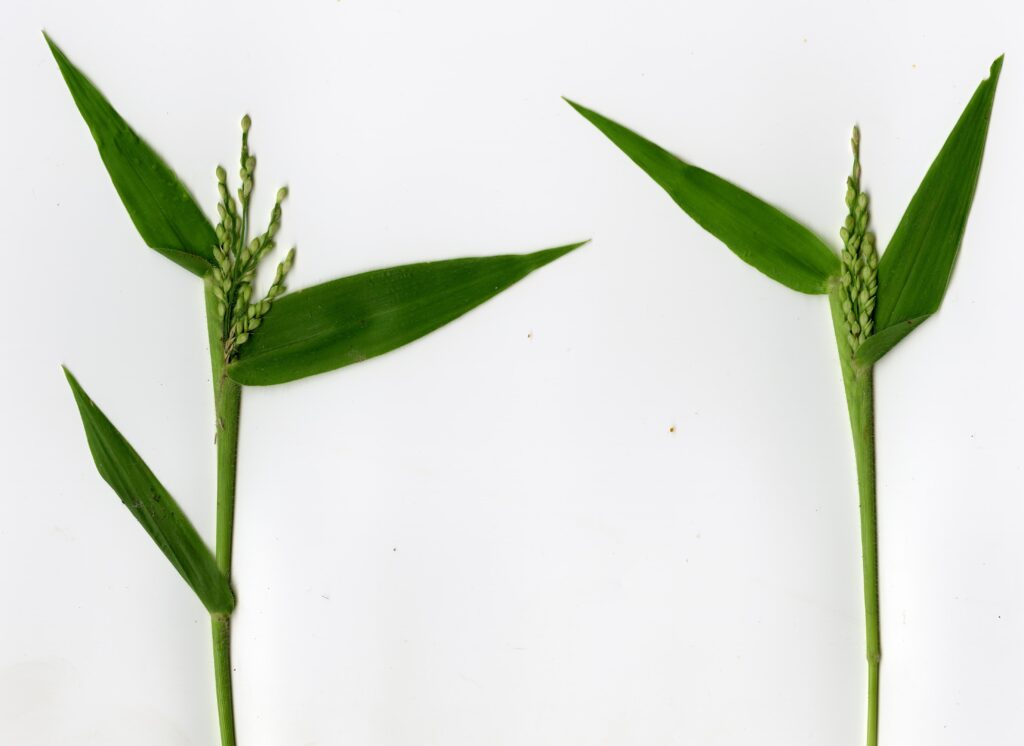
Browntop millet is one of the rarest and lesser-known millet varieties, but it is gaining popularity due to its impressive nutritional profile and ecological benefits. It is predominantly grown in certain regions of India, particularly Karnataka.
Browntop millet can be eaten as porridge, cooked like rice, used in upma, added to salads, or made into rotis.
Benefits of Browntop Millet:
- Detoxifying Properties: It has natural detoxifying effects, helping to cleanse the liver and body of toxins.
- Manages Blood Sugar: Like other millets, browntop millet has a low glycemic index, which helps maintain stable blood sugar levels, making it an excellent choice for people with diabetes.
- Promotes Weight Loss: The high fiber content keeps you fuller for longer, curbing hunger pangs and supporting weight loss.
- Rich in Essential Nutrients: Browntop millet is a good source of essential minerals like iron, calcium, and magnesium, which support bone health and overall energy levels.
- Environmentally Friendly: Browntop millet is considered eco-friendly due to its ability to grow in less fertile soil without the need for chemical fertilizers, contributing to sustainable farming practices.
General Benefits of Millets
In addition to the specific benefits of individual millet varieties, consuming millets as a regular part of your diet provides numerous general health advantages:
1. High in Nutrients
Millets are rich in essential vitamins (particularly B-vitamins), minerals, fiber, protein, carbohydrates and antioxidants, making them an excellent source of nutrition for maintaining good health.
Millet proteins contain high amount of essential amino acids such as lysine, methionine, and cysteine, which are limited in other cereal grains like rice and wheat.
Additionally, millet fats consist of unsaturated fatty acids, including linoleic and oleic acids, which enhance its nutritional value and offer various health benefits.
Millets are also a great source of iron, there also the clinical trials showing millets could reduce anaemia and rise haemoglobin levels in adolescents.
2. Rich in Antioxidants
Millets are rich in antioxidants, including phenolic compounds, flavonoids, tannins, luteolin and phytic acid, all of which help neutralize free radicals and reduce oxidative stress in the body.
These antioxidants play a key role in preventing cellular damage, supporting heart health, and reducing the risk of chronic diseases like cancer and diabetes.
Consuming millets regularly can enhance the body’s defense mechanisms, promoting overall health and longevity.
3. Gluten-Free Alternative
Celiac is a disease where ingestion of gluten triggers an immune response that damages the small intestine and interferes with the absorption of nutrients from food.
Millets are naturally gluten-free, making them an excellent choice for individuals with gluten intolerance or celiac disease.
Their gluten-free nature, combined with high fiber and nutrient content, supports digestion and boosts overall wellness.
4. Good for Digestion
Millets are high in dietary fiber, both soluble and insoluble fiber, which promotes healthy digestion and prevents constipation, bloating, and other digestive issues.
Soluble fiber dissolves in water to form a gel-like substance that slows digestion, helping to regulate blood sugar levels and lower cholesterol. Soluble fiber also improves gut bacteria by acting as a prebiotic.
Insoluble fiber doesn’t dissolve in water and adds bulk to stool, promoting regular bowel movements and preventing constipation.
Millets have been shown to increase benefits bacteria and decrease harmful bacteria in the gut.
Regular consumption of millets has been linked to improved gastrointestinal function, enhanced nutrient absorption, and reduced risk of various digestive disorders.
5. May Help Manage Blood Sugar Levels
Millets help manage blood sugar levels due to their low glycemic index, high fiber content, and complex carbohydrates, which slow down the digestion and absorption of carbohydrates.
Studies suggest that low-digestible starch and phenolic compounds in millets contribute to its anti-diabetic properties by its antioxidative properties.
Animal studies show that feeding diabetic rats with kodo and finger millet-based diets reduced blood glucose levels.
There are also few clinical studies proving millet diet can help manage blood sugar levels.
A study found that Millet diet (foxtail millet, finger millet, sorghum) regulated the glucose level in the diabetic patients better than the non-millet diet.
6. May Aid in Weight Loss
Millets can also be a great addition to your weightloss diet as it is a good source of magnesium, tannins and starch.
Magnesium plays an essential role in the regulation of thyroid gland, promoting weight loss by improving fat metabolism.
Sorghum is also rich in tannins, which inters with the amylose in starch forming resistant starch.
This naturally modified starch, means the resistant starch cannot be digested in the small intestine and thus reaches the large intestine. This may help in weight management and support healthy gut bacteria.
Animal studies suggest that sorghum could reduce weight gain, which is attributed to formation of complexes with starch making it digest slowly, which helps you in lower caloric intake.
7. May Promote Heart Health
The antioxidants and fiber found in millets help lower cholesterol, reduce inflammation, and protect against heart diseases.
Millets contain higher levels of sterols and policosanols, which prevent the production of cholesterol.
Animal studies suggest that millets, particularly sorghum could promote cardiovascular health by reducing both plasma low-density lipoprotein (LDL) and liver cholesterol levels at different doses.
Millets have also been shown to reduce both systolic and diastolic blood pressure in patients with mild blood pressure.
8. May Support Neurological Function
Gut-brain axis is a bidirectional communication pathway connecting the gut and the brain.
Emerging research suggests that microbiome in the gut plays a crucial role in improving mood and cognition.
Gut microbiota is influenced by dietary fiber, and millets are a great source of it.
Gut microbiota communicates with the central nervous system through the vagus nerve, immune system and synthesis of neurotransmitters. They generate a variety of neurotransmitters that affect behavior and brain function, including dopamine, gamma-aminobutyric acid (GABA), and serotonin.
Polyphenols in sorghum have shown potential protective effects against Alzheimer’s Disease in cellular and animal studies.
Millets have also been shown to have neuroprotective effects against Parkinson’s disease and other neurological disorders.
9. May Reduce the Risk of Cancer
Millets are rich in antioxidants, which may prevent the growth and production of cancer cells in the body.
A cellular study suggests that phenolic extracts rich in ferulic and p-coumaric acids from kodo millet has shown to be effective in inhibiting the growth of human colorectal cancer cells.
Millets have also shown protective effects against breast, liver and colon cancer cells in cellular studies.
A compound named 3-deoxyanthocyanidins from the bran of black sorghum strongly inhibited the growth of various human cancer cells in cellular studies.
And its potential was comparable to that of quercetin, one of the most potent antioxidant molecules.
10. May Reduce Higher Uric Acid Levels
An increase in uric acid levels, caused by either too much production or insufficient excretion, leads to high serum uric acid, known as hyperuricemia, which can cause various diseases.
Millets contain natural compounds like luteolin, which may help prevent and treat hyperuricemia and its related conditions.
The Bottom Line
Millets are versatile, nutrient-rich grains with a wide range of health benefits—from improving digestion and managing blood sugar to boosting iron and calcium intake. Each variety, like pearl millet or finger millet, offers unique nutritional value, making them an excellent addition to any diet.
Although more animal studies and clinical trials are needed to fully understand how millet nutrients interact with our bodies and genes, their promise in nutrition and business is undeniable.
Whether enjoyed as porridge, mixed into salads, or used in baking, millets are a powerful, natural way to support better health and well-being.
You might also be interested in
Top 10 Biotin Rich Foods Vegan
Top 10 Iron Rich Indian Foods
7 Surprising Benefits of Brinjal



